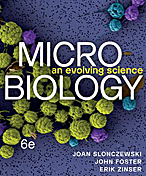Bartonella henselae: Difference between revisions
| Line 17: | Line 17: | ||
==Description and significance== | ==Description and significance== | ||
Bartonella henselae is an aerobic, oxidase-negative, and slow growing Gram negative rod, slightly curved. It does not have flagella to facilitate its movement; however, there have been evidence of twitching motility. It requires very exact and fastidious conditions to grow in vitro. The temperature for optimal growth is 37 degrees Celsius and is highly dependent on the form and quantity of heme available. It is also very sensitive to changes in pH and has an explicit pH range of 6.8 to 7.2 (3). Under the microscope, the colonies are cauliflower-like (9). | |||
Bartonella henselae was first discovered in a patient suffering from Cat Scratch Disease, though not identified, in the 1950s by Debre et al. The bacteria is found and can be isolated from erythrocytes of cats as well as lymph nodes of humans (6). It is important to use blood agar or chocolate agar plates and provide carbon dioxide. Colonies usually takes two to six weeks to form. The slow growth contributes to frequent misdiagnonsis. That is perhaps the reason why the bacterium was not identified until the 1990s with extensive work by Hensel, even though the first case of Cat Scratch Disease was described four decades prior (3). It is later discovered that this bacterium is associated with many other symptoms found in HIV-positive individuals. | |||
==Genome structure== | ==Genome structure== | ||
Revision as of 22:47, 29 August 2007
A Microbial Biorealm page on the genus Bartonella henselae
Classification
Bartonella henselae was formerly known as Rochalimaea henselae. It was re-classified in 1993 (11).
Higher order taxa:
Domain: Bacteria, Phylum: Proteobacteria, Class: Alphaproteobacteria, Order: Rhizobiales, Family: Bartonellaceae (1)
Species:
Bartonella henselae
There are two serotypes of Bartonella henselae. Seroptype I is Houston-1 and Serotype 2 is Marseille. The classification is based on the differences in the 16S ribosomal DNA sequences (8).
Description and significance
Bartonella henselae is an aerobic, oxidase-negative, and slow growing Gram negative rod, slightly curved. It does not have flagella to facilitate its movement; however, there have been evidence of twitching motility. It requires very exact and fastidious conditions to grow in vitro. The temperature for optimal growth is 37 degrees Celsius and is highly dependent on the form and quantity of heme available. It is also very sensitive to changes in pH and has an explicit pH range of 6.8 to 7.2 (3). Under the microscope, the colonies are cauliflower-like (9). Bartonella henselae was first discovered in a patient suffering from Cat Scratch Disease, though not identified, in the 1950s by Debre et al. The bacteria is found and can be isolated from erythrocytes of cats as well as lymph nodes of humans (6). It is important to use blood agar or chocolate agar plates and provide carbon dioxide. Colonies usually takes two to six weeks to form. The slow growth contributes to frequent misdiagnonsis. That is perhaps the reason why the bacterium was not identified until the 1990s with extensive work by Hensel, even though the first case of Cat Scratch Disease was described four decades prior (3). It is later discovered that this bacterium is associated with many other symptoms found in HIV-positive individuals.
Genome structure
Describe the size and content of the genome. How many chromosomes? Circular or linear? Other interesting features? What is known about its sequence? Does it have any plasmids? Are they important to the organism's lifestyle?
Cell structure and metabolism
Describe any interesting features and/or cell structures; how it gains energy; what important molecules it produces.
Ecology
Describe any interactions with other organisms (included eukaryotes), contributions to the environment, effect on environment, etc.
Pathology
How does this organism cause disease? Human, animal, plant hosts? Virulence factors, as well as patient symptoms.
Application to Biotechnology
Does this organism produce any useful compounds or enzymes? What are they and how are they used?
Current Research
Enter summaries of the most recent research here--at least three required
References
1. Bartonella henselae NCBI classification reference: http://www.ncbi.nlm.nih.gov/Taxonomy/Browser/wwwtax.cgi?mode=Info&id=38323&lvl=3&lin=f&keep=1&srchmode=1&unlock
Edited by student of Rachel Larsen
